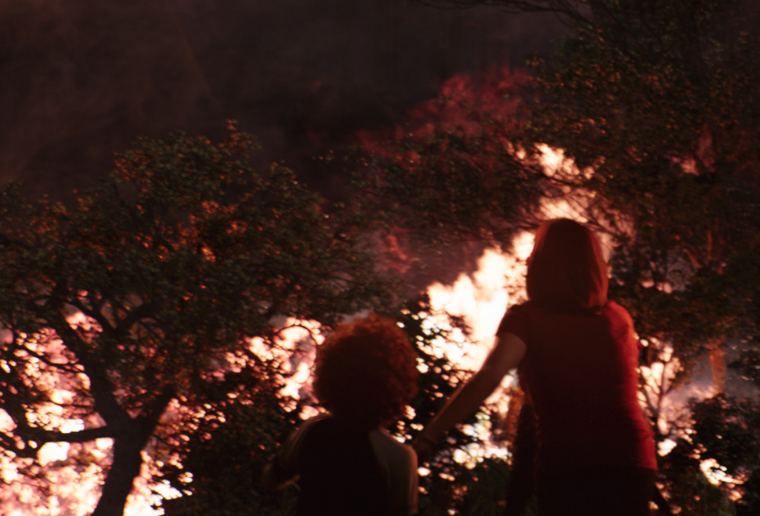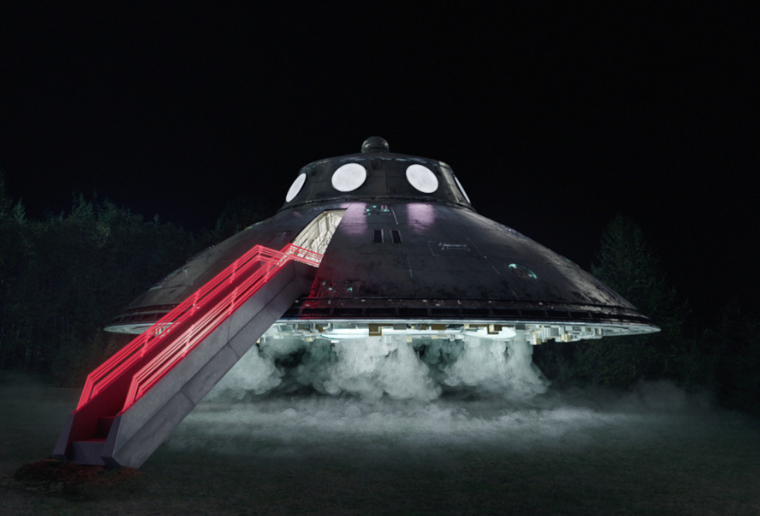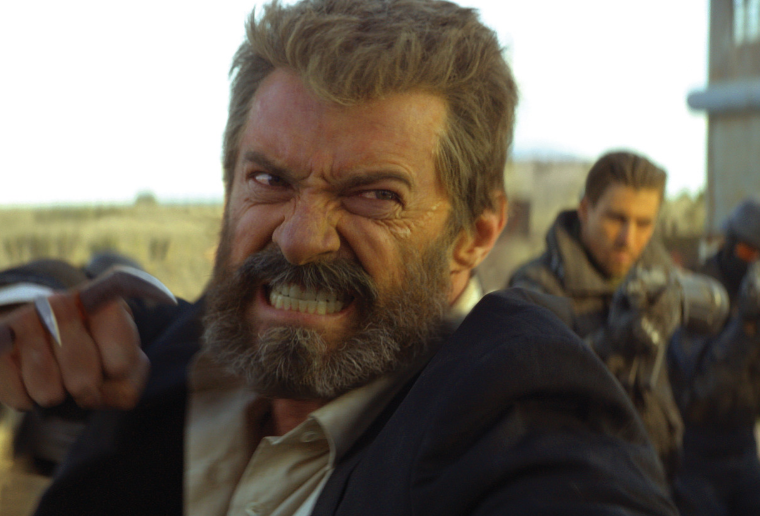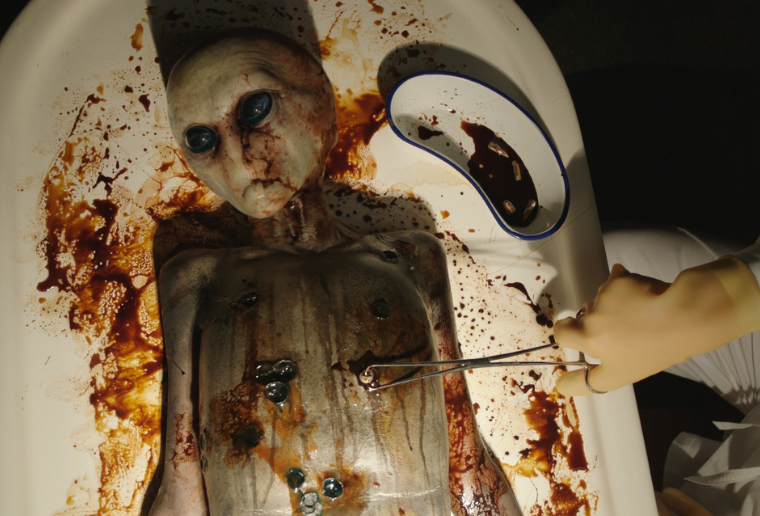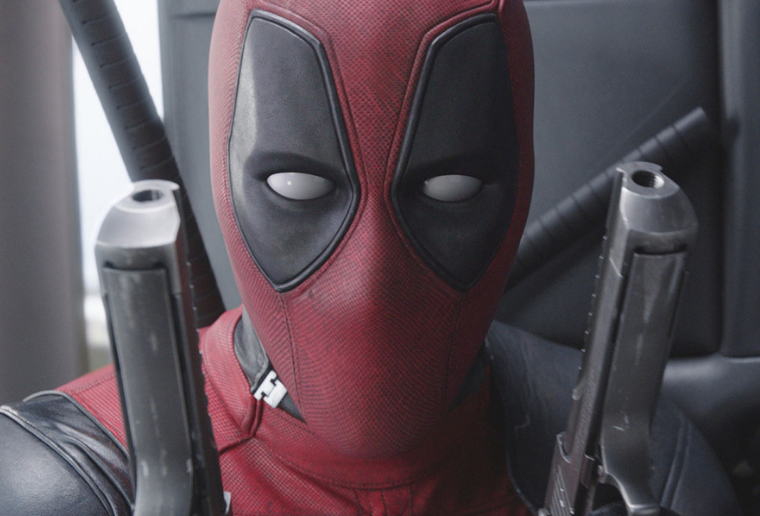The X-Files: Season 11 Case Study
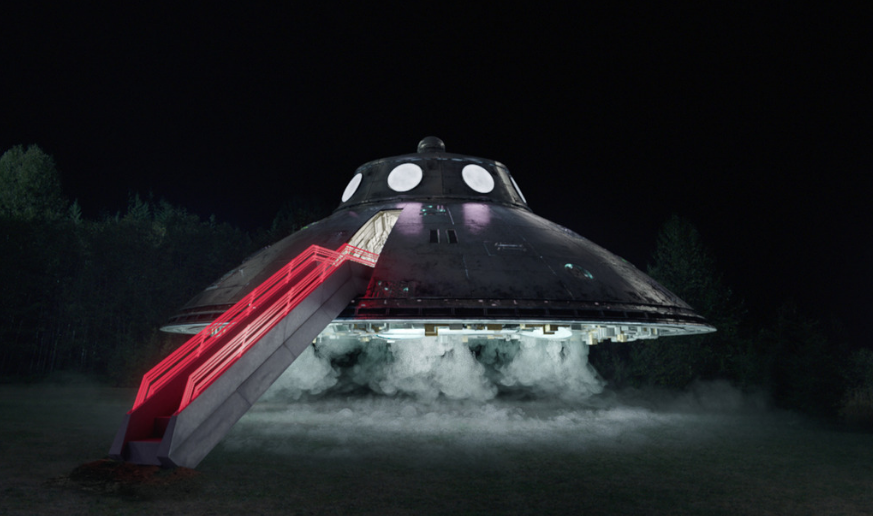
Case Study
25 years after its debut, The X-Files remains beloved by a legion of diehard fans. Iconic FBI agents Fox Mulder and Dana Scully are arguably sci-fi royalty, so it’s no surprise that they returned for an eleventh season of out-there cases following 2016’s successful mini-series revival. And Image Engine was thrilled to be called on again to deliver the high-quality visual effects that would help tell their stories.
Image Engine was previously called upon to bring the stunning and surreal sights of season 10 to life, which included everything from crash-landing UFOs to secretive alien autopsies. The crew was again brought on board for The X-Files season 11 – a much larger effort, with more episodes and a larger variety of storylines, and all to be completed within a compact schedule.
From a faked Moon landing to gleaming alien craft, Image Engine needed to deliver numerous high-quality visual effects on a television turnaround. The studio stepped into the project late in the game, relying on its tried-and-tested pipeline and considerable in-house talent to deliver on the brief for the series’ anticipated return.
The truth behind the conspiracy
In the mysterious world of The X-Files, even far-fetched conspiracy theories can be legitimate – and as season 11 revealed, such was the case with Apollo 11’s once-momentous Moon landing.
As the camera pulls back, what initially appears to be authentic archive footage of Neil Armstrong’s first stellar steps is revealed to be a complex set on a soundstage.
While the shot looks completely in-camera, the only physical part of the Apollo 11 lunar lander witnessed is the bottom half of the ladder. “Sometimes, creating something in CG rather than physically building it is the faster process – which helps on a television turnaround,” begins Robin Hackl, visual effects supervisor on The X-Files.
“The challenge in the creation of the lunar lander was in suspending disbelief for as long as possible; we needed to make people think that this was real archive footage before the big reveal. That’s a difficult task, considering we’ve all grown up watching the footage of the lunar lander over and over again. It’s entrenched in our minds.”
To make the asset feel as real as possible, Image Engine overlaid the complex CG build of the lunar lander with a number of digital matte paintings, creating a deep sense of detail and physicality.
“A big congratulations goes to the matte painting department, who scoured through reams of reference of the Moon landing to make the shot as close to the real thing as possible,” says Hackl. “Our artists also nailed the lighting, ensuring the lander sat perfectly in the plate. Viewers could really buy into this illusion before being jerked out of it and into the ‘reality’ of the conspiracy theory.”
Identified flying object
Keeping with the theme of conspiracy theories made real, one of Image Engine’s most involved season 11 tasks required the creation of a zippy, shimmering UFO. The craft soars into view, unfurls a walkway, and produces a large-headed, enormously eyebrowed alien.
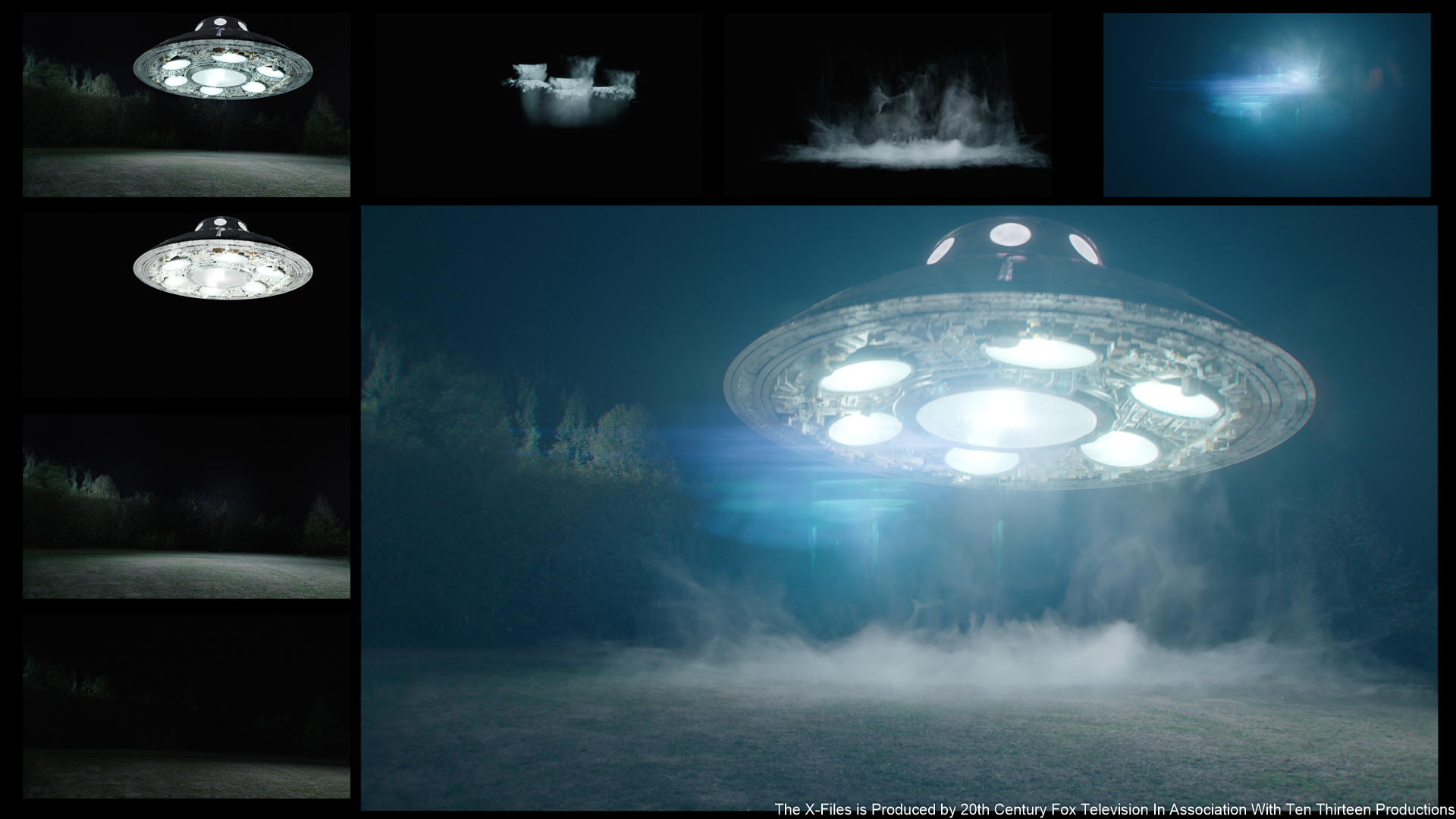
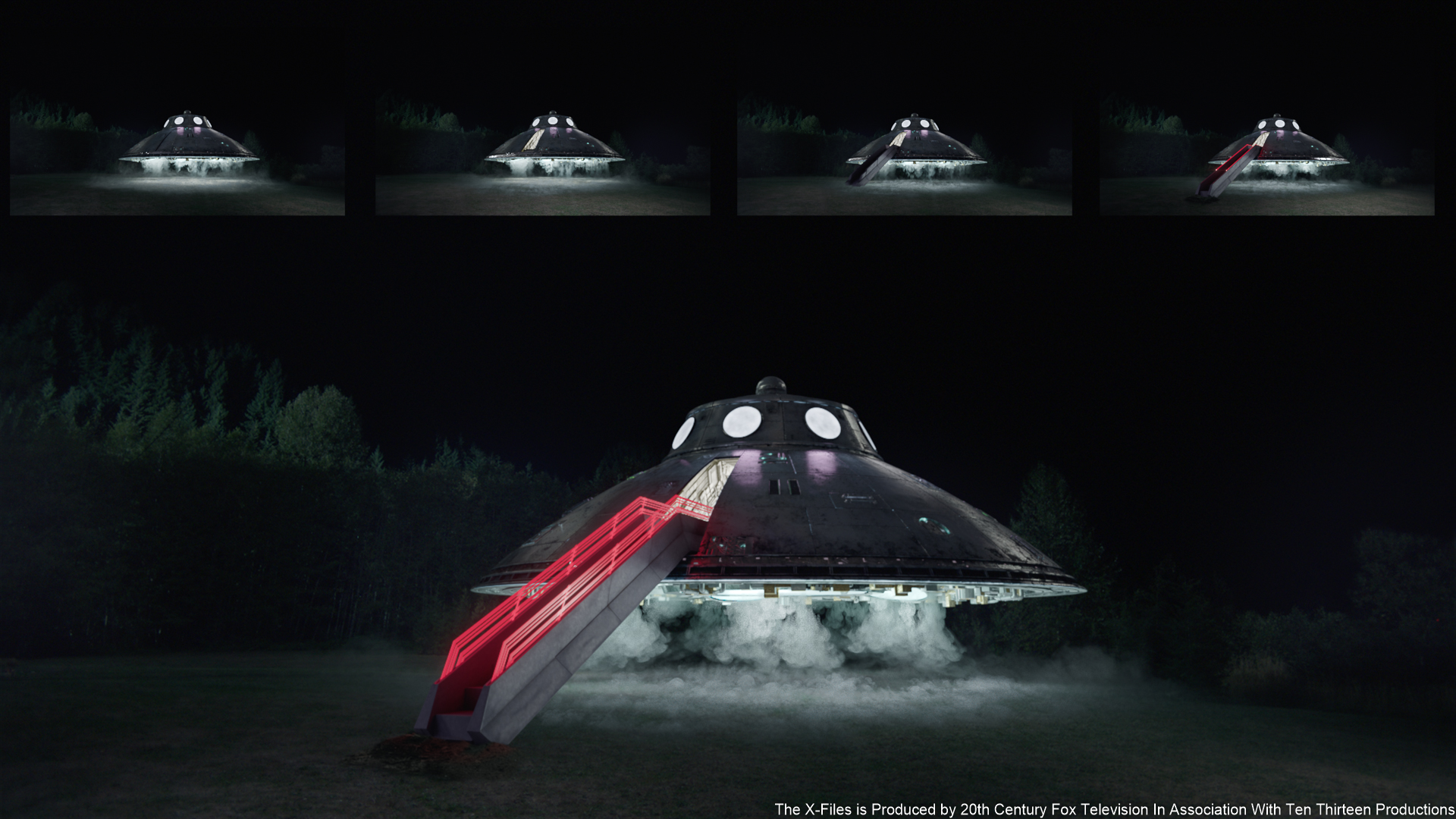
“The production wanted a tongue in cheek, whimsical feel to the scene, with a campy, 1960s take on a UFO humorously appearing behind the characters as they interact and talk. But they wanted it to feel believable too,” explains Hackl. “For reference, we were working largely from the iconic UFO illustration featured on a classic Grenada postage stamp!”
Lighting and simulations were vital in fostering a feeling of a real, functioning alien craft. These included the rotating ring of lights circling the UFO’s base, the pulsing plumes of smoke, and the chromatic aberration that casts across the camera lens as the craft blasts back towards the stars.
“We had to create a sense that this thing was lighting and interacting with the environment,” says Hackl. “We matched it to the surrounding atmosphere, ensuring it felt married to the trees and the practical, on-set escalator element. A lot of relighting was required to make sure all of these elements matched up.”
The entire scene was completed in a short timeline of four weeks, from concept to delivery. “It was a big ask to go to the FX department and say, ‘We need all of these crazy simulations by tomorrow’,” says Hackl. “Thankfully they’re incredibly talented, and know how to achieve quality results, fast.”
In the shop
When the largest and most visible object in a frame is 100% digital, yet needs to pass for the real thing, you face a considerable challenge. This is what Image Engine needed to accomplish with a spacecraft witnessed across 11 shots in one single episode.
The craft in question hangs lifeless from the roof of a warehouse, entwined in an electrical cable and monitoring equipment. The show’s producers wanted the look of the ship to fall somewhere between a traditional NASA space shuttle and a stealth fighter. Image Engine took point on developing this hybrid look.
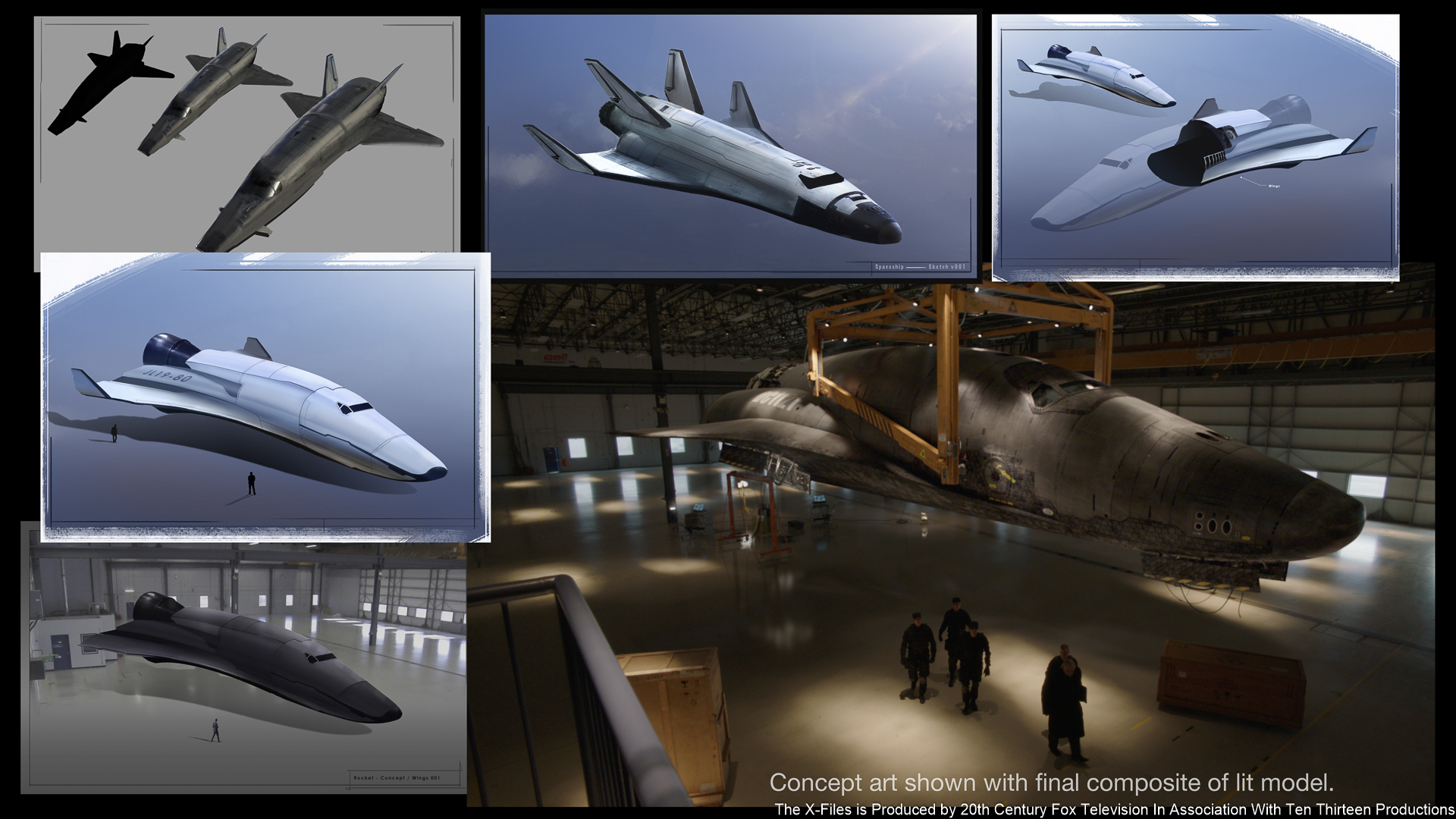
“Julian Lodono Calle, Image Engine’s concept artist, was responsible for the concept development of the craft,” says Hackl. “The production was totally open to Julian’s ideas and creative process, and let us give our take on the concept. We were able to get really imaginative and conceive a ship that [The X-Files creator] Chris Carter loved.”
When it came to asset development and look-dev, Image Engine focused its energy on extensive geometry and impeccable texture work, ensuring that the ship looked realistic form all required perspectives.
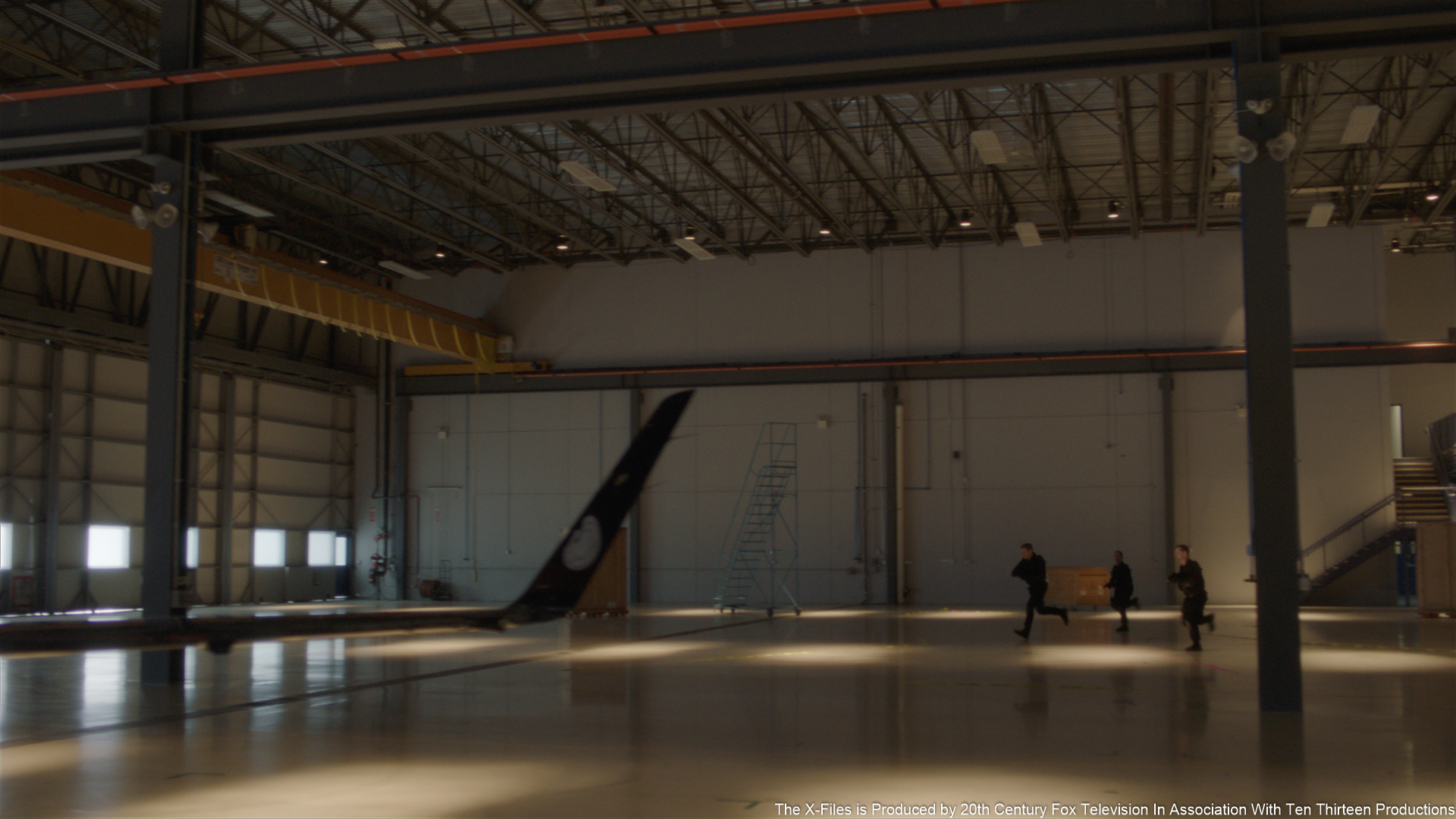
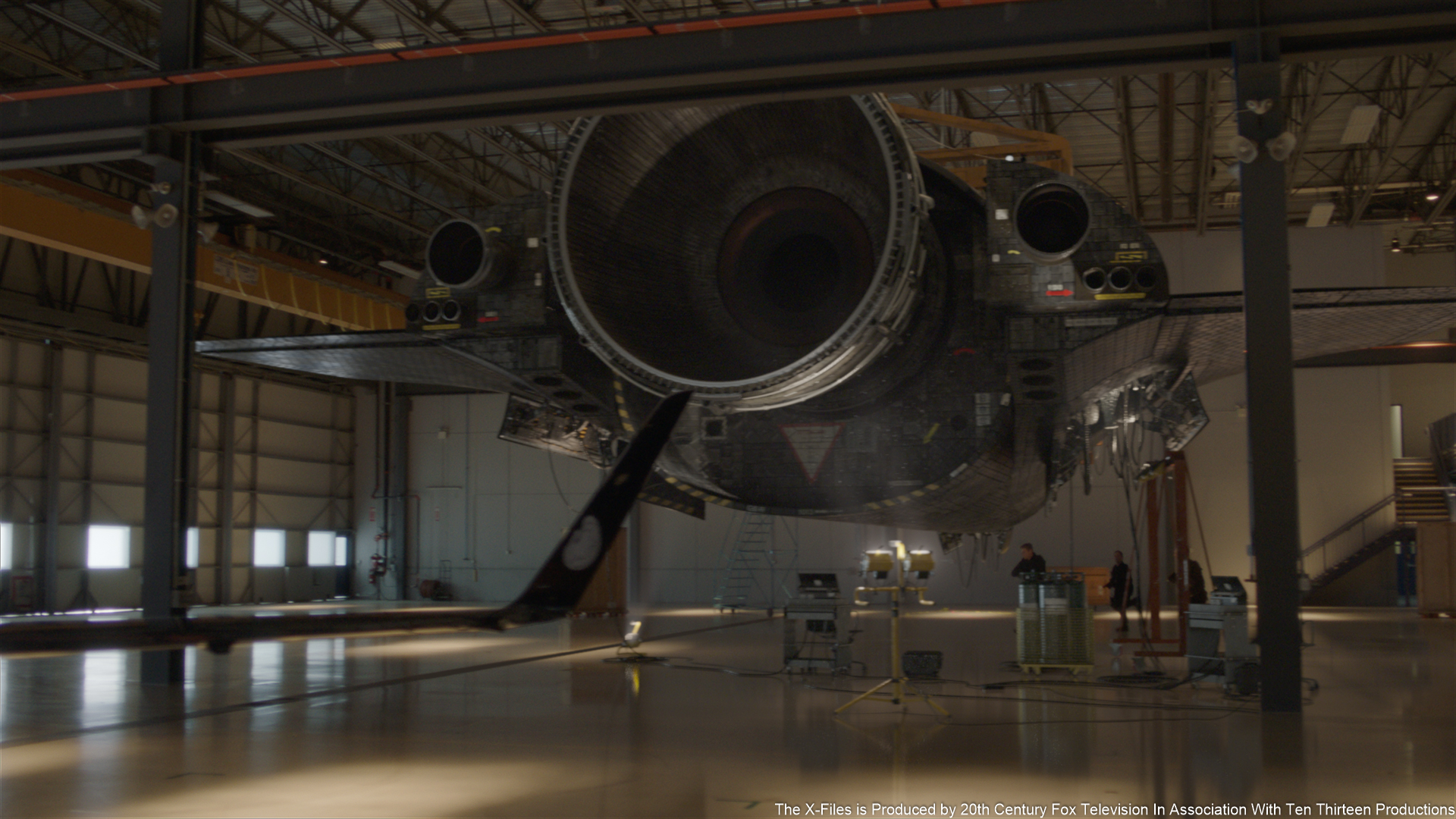
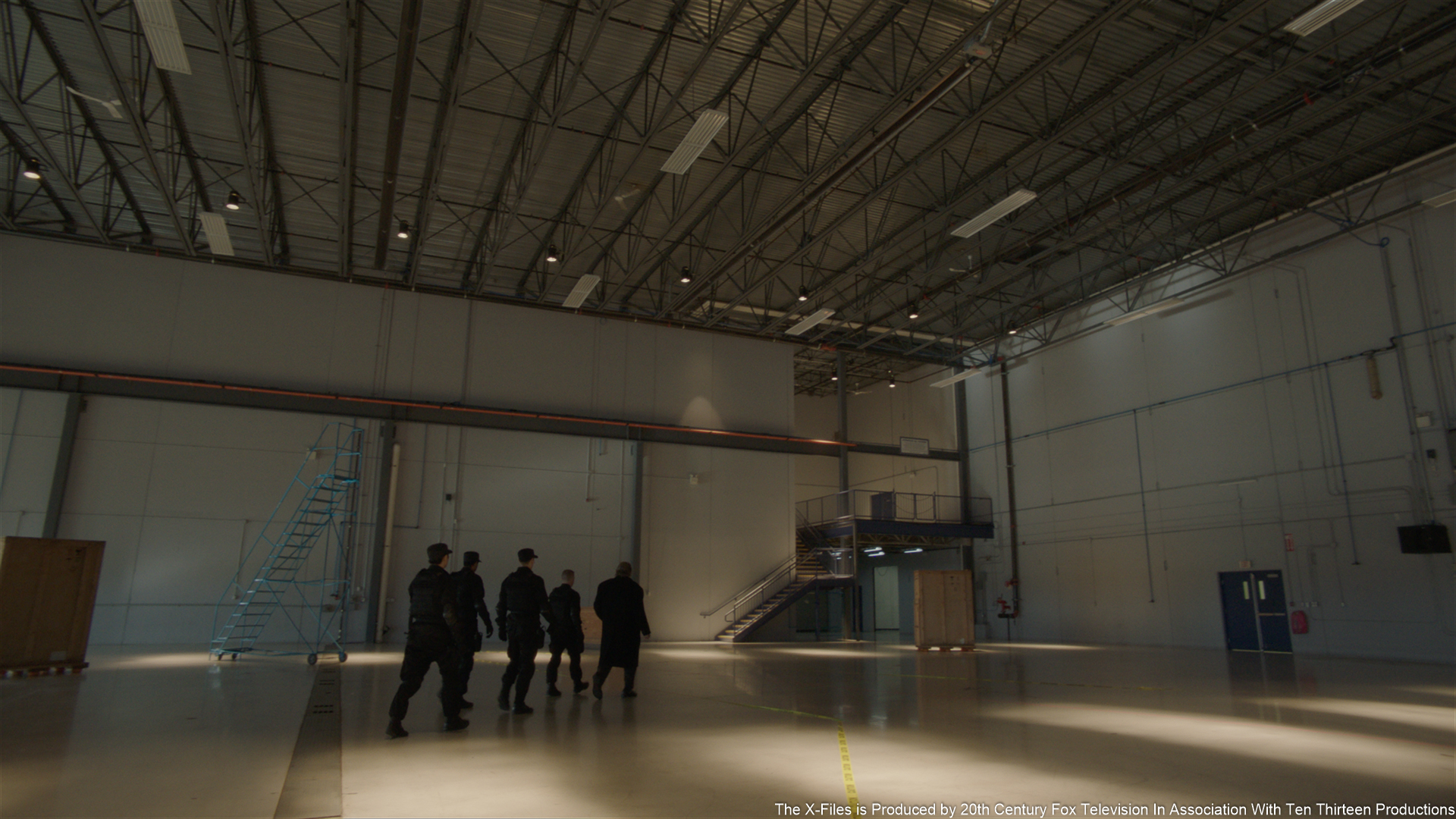
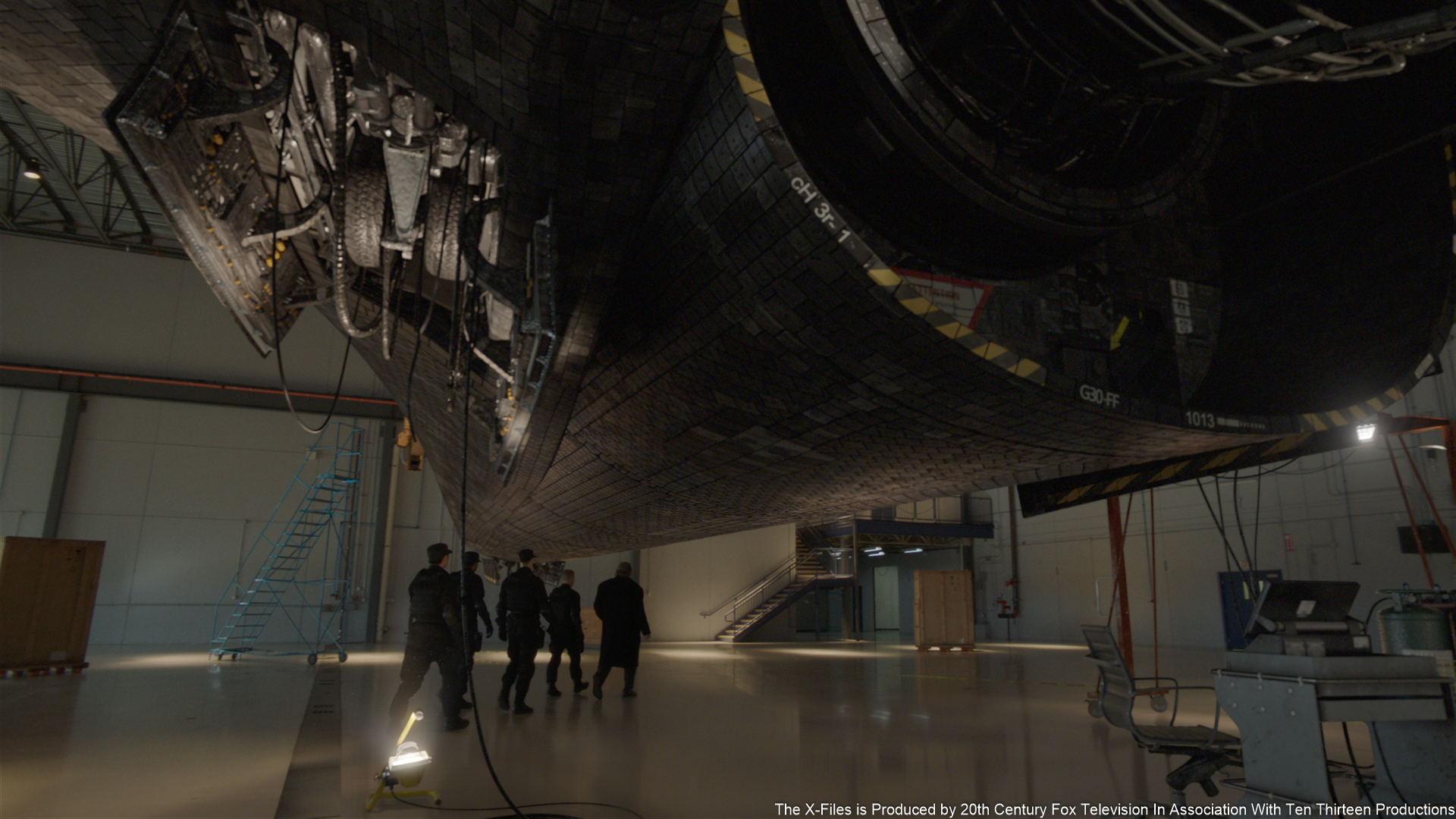
“We had the benefit of seeing the cut ahead of time, so we knew the angles that we needed to focus on,” says texture lead Cheri Fojtik of the extensive creation process. “A lot of painstaking work went into that. We were almost hand-placing the ceramic tiles on the underneath of the ship, for instance. For the panels along the body and top of the ship we looked at fighter jet references and placed them sporadically, but in a way that communicates a sense of functionality.”
Reshaping reality and enhancing explosions
Elsewhere, Image Engine utilized invisible effects to augment shots while ensuring any computer-aided enhancements remained hidden from the naked eye.
In one shot, characters find themselves trapped in a forest pit while another paces menacingly above, pouring gasoline onto his intended victims. “Once the production saw the scene in the edit, they felt that the hole was not deep enough, and that the characters could climb out if they tried to,” says Hackl. “That reduced the tension of the scene.”
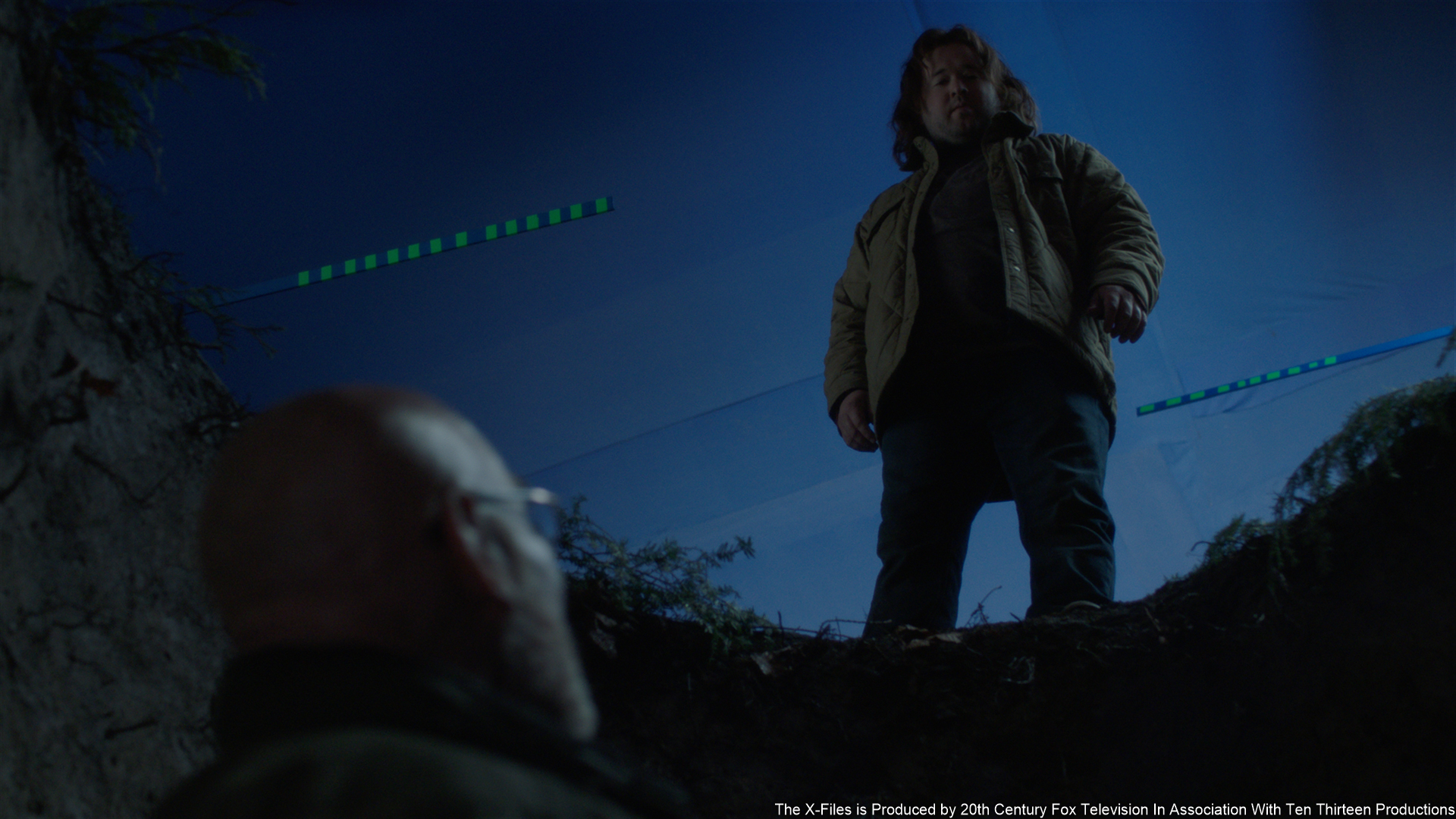
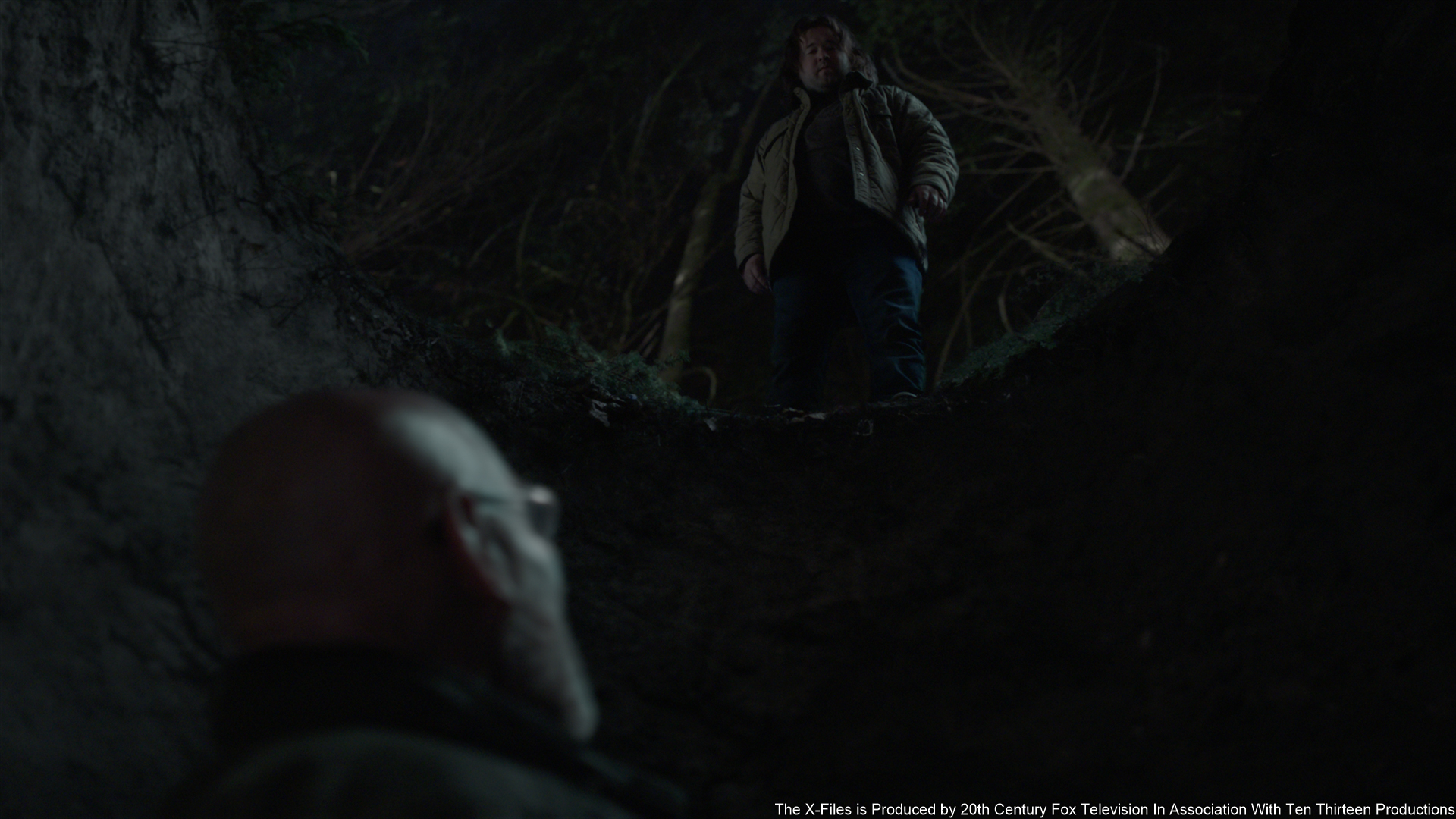
Luckily, there was no need to reshoot. Using a combination of matte painting and massaging elements from multiple 2D shots, Image Engine was able to create the illusion that the pit was much deeper and the characters even more helpless then initially apparent.
“This was tricky considering there was no blue screen. We had to roto the foreground actors completely off the plate and reintegrate that work back into the scene,” says Hackl. “Grading and colour correction played a big part in ensuring that the background and foreground elements sat together perfectly.”
In another season highlight, Mulder and Scully narrowly dodge a fiery demise as they leap through a patio glass door, escaping the explosion at their heels. This shot involved the layering and blending of numerous practical explosion elements previously shot against blue screen.
“Beyond that we needed to create interaction with the environment, such as the light of the explosion spilling up the side of the building and the shattered glass bursting from the patio door. We combined and choreographed these elements to dial in the look of the shot, ensuring it all felt completely integrated.”
Wi-fido – duplicating robotic pups
In The X-Files, even dogs are imbued with a sinister and uncanny quality. In one tense scene, a warehouse full of security robo-dogs close in on Mulder and Scully, a menacing shade of neon green radiating from their eyes.
On set, just one dog drone played the part. It was up to Image Engine to digitally replicate an army of robo-rovers. One scene featured some 20 versions of the cybernetic canine, all at varying positions of the walk cycle.
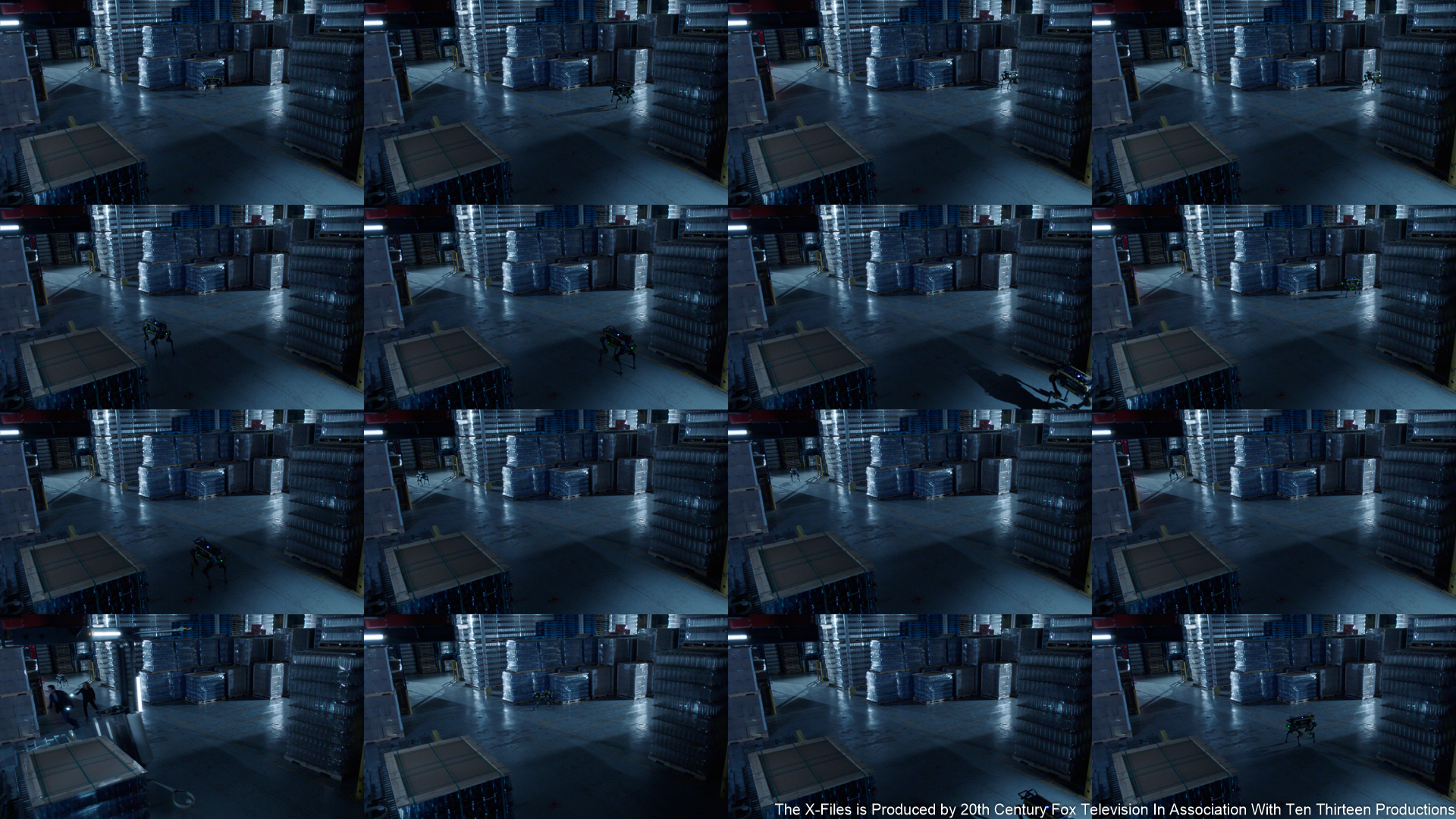
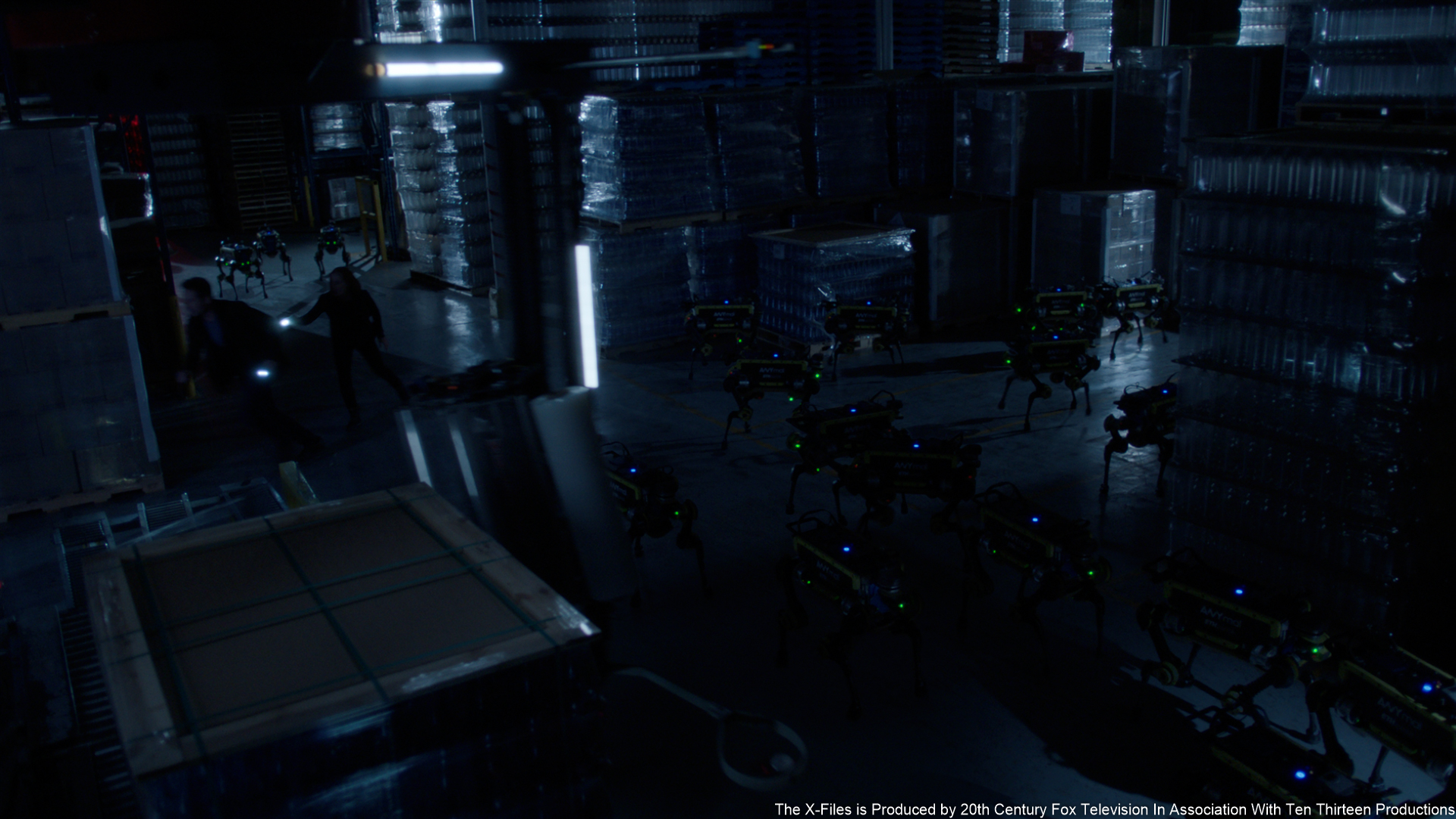
This proved to be a substantial compositing job. “We had to rotoscope each dog to allow us to layer them appropriately,” explains Hackl. “That allowed us to more firmly integrate them into the scene by adding shadow elements and overlapping them into the plate. We also had to add the blinking eyes to the dogs, the lights of which had to be digitally reflected in the ground and surroundings of the warehouse – for each and every dog.”
“It’s those little subtleties that help bury characters into a shot,” affirms Hackl.
A proven pipeline at work
A second opportunity to work on The X-Files was a dream come true for many of the Image Engine crew, who themselves are longtime fans of the conspiracy-laden drama.
“I’m a huge fan of The X-Files, so this was a great opportunity,” says Geoff Pedder, lead lookdev TD on the project. “We were able to get hugely creative with the designs, and infuse them with crazy amount of narrative-driven detail. It’s absolutely thrilling to invest time in meticulously developing the look for such a revered show.”
Even more welcome was the opportunity to prove just how robust and capable the studio is when it comes to producing movie-quality effects to a TV timeline.
“It is a real testament to the pipeline of Image Engine that we can get into significantly complex work and execute it at such speed,” says Hackl. “We’ve developed the studio workflow to the point where we can tackle any kind of shot, even when we’re coming onto a project late in the process.”
Furthermore, the production and creative teams enjoyed a truly harmonious working relationship, with Image Engine trusted not only to deliver but also conceive ideas for the show. “The production absolutely entrusted the work to us and were very flexible throughout,” says Hackl. “Their trust facilitated the process: we were able to extend our energy in the appropriate areas, make the assets integrate, and achieve a strong creative output fairly quickly.”
The result was an engaging and immersive next chapter in the ongoing saga of Mulder and Scully, with Image Engine’s visual effects shedding more light on the slowly unravelling conspiracy.


